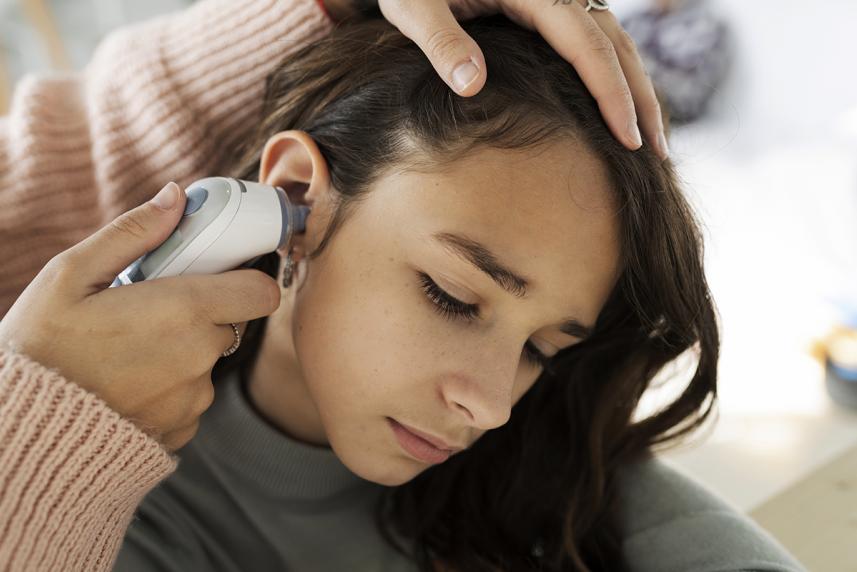
We have you covered — schedule a virtual visit today. No insurance required.

Brush up on your thermometer skills — and find out if you have a fever — with this handy guide.
Popping in a thermometer to see if you have a fever seems like a no-brainer. But are you doing it correctly? And what do the numbers mean?
A high body temperature is a sign that you’re fighting off an illness (such as a cold, flu or COVID-19). Knowing whether you have a fever is important info. It can help you find out how sick you really are, if you should stay in bed and whether to call the doctor.
Here’s what you need to know about the different methods of checking a fever. You’ll also get the scoop on the various kinds of thermometers.
A fever usually comes with other symptoms. These let you know it’s time to break out the thermometer:
In adults, a fever often signals that you have a virus. And kids often have fevers due to an ear infection, sore throat, viral illness or even appendicitis.
Are you or your child feeling feverish? Do a temperature check as soon as possible. Use the thermometer you have on hand: Oral, ear and forehead devices all work.
For adults, there is not a preferred brand or method, says Shawn Long, MD. He’s the director of virtual primary care at Optum Everycare Now. Just make sure the thermometer is digital and the screen works.
(FYI: The Optum Store carries a variety of thermometers to fit your needs. Shop now and have your order delivered directly to your door.)
A “normal” body temperature varies from person to person. It can range between 97° F to 99° F (36.1° C to 37.2° C) or higher. “A reading of 100.4° F (38° C) means you have a fever,” says Ajfar Sherif, MD. He’s the medical director of Optum Virtual Urgent Care.
You have several options for taking your temperature at home. Read on to learn the differences between the methods.
This is the best choice for adults as well as for children ages 4 and older. For most people, taking a temperature reading by mouth gives the most accurate results. Use a digital multiuse thermometer. To do it right, follow these steps:
Note: You can also use a digital thermometer under your armpit. But temperatures taken with this method are usually the least accurate, according to the Mayo Clinic.
A tympanic thermometer reads the infrared heat inside the ear. This method is good if you need a quick reading, says Dr. Sherif. But it is not as accurate as under the tongue or in the rectum. Follow these general steps:
A rectal thermometer gives the most accurate reading for infants under 3 months of age, per the American Academy of Pediatrics. You take a rectal temperature with a multiuse digital thermometer. (Only use that thermometer for rectal readings. Get a second one for taking the oral temperatures of other family members.)
To take a baby’s or toddler’s temperature rectally, follow these steps:
Important: Call your pediatrician right away if your infant is 2 months old or younger and has a fever of 100.4° F or higher. Infants with a fever need immediate attention, says Dr. Long.
A temporal thermometer uses infrared technology. It reads the heat from the artery that runs across your forehead. “They are not as accurate as the ones inserted into the mouth, rectum or armpit,” says Dr. Sherif. To do it right:
What about other types of thermometers? There are some you should avoid, according to the Cleveland Clinic. Those include:
Here are some other handy tips for using a thermometer at home.
Beware of hot and cold. Taking your temperature orally? Wait at least half an hour after eating or drinking before putting the thermometer in.
Try again if you get an error message. Turn the device off and back on. That usually does the trick. You might also need to change the battery.
Disinfect the thermometer each time. A simple alcohol swab and a quick rinse with water works.
Store it right. After the thermometer is clean, place it in the sleeve or box it was bought in. Store it in a cool, dry place.

We have you covered — schedule a virtual visit today. No insurance required.
Additional sources
Fever overview: Mayo Clinic (n.d.). Fever
Thermometers: Cleveland Clinic (2020). How to take your temperature
Kids: American Academy of Pediatrics (2020). How to take your child’s temperature